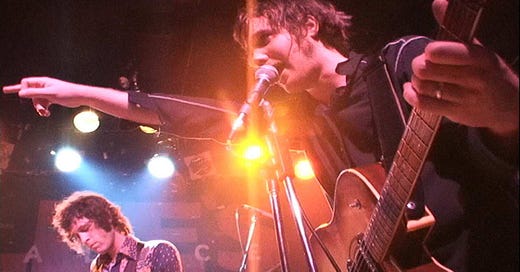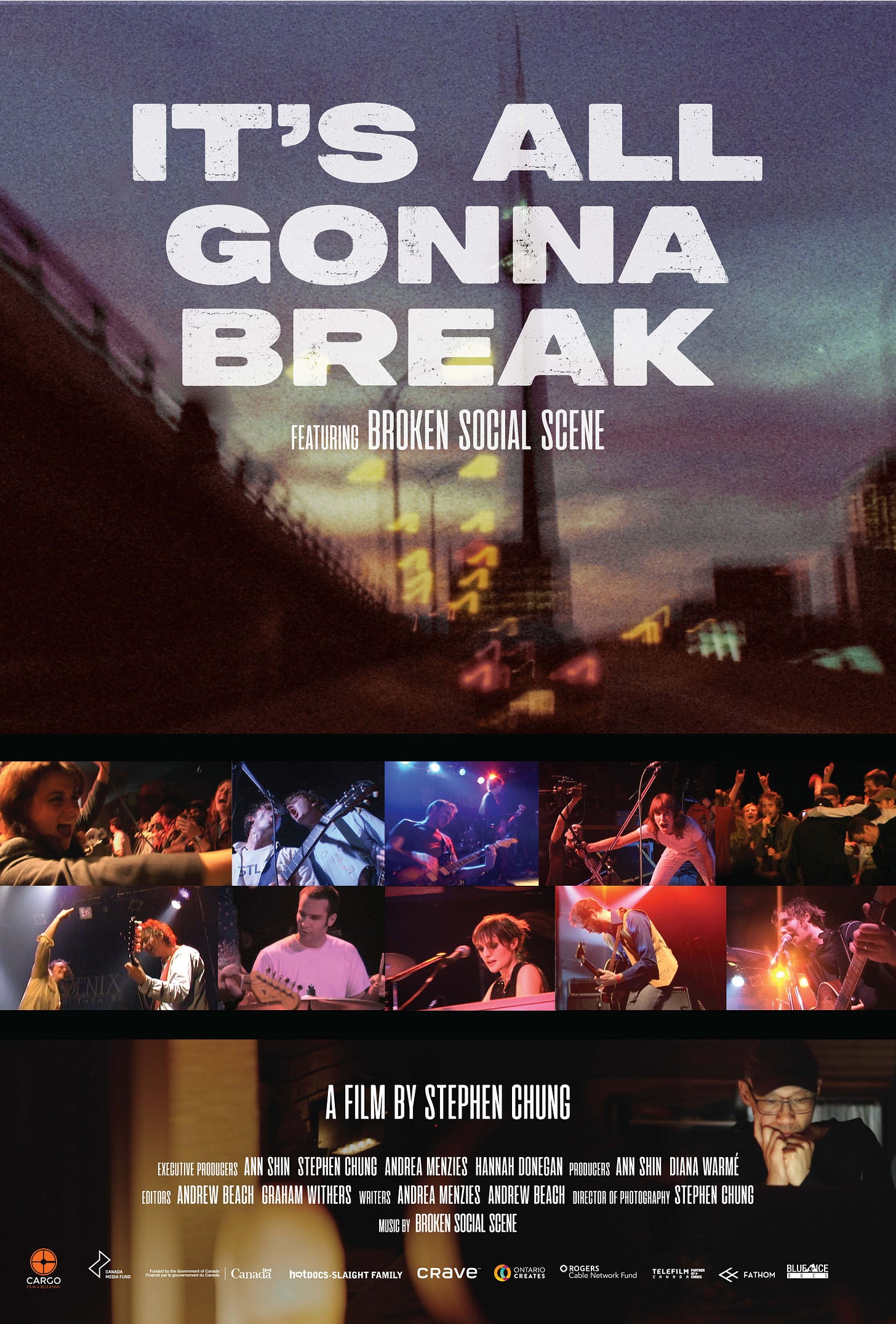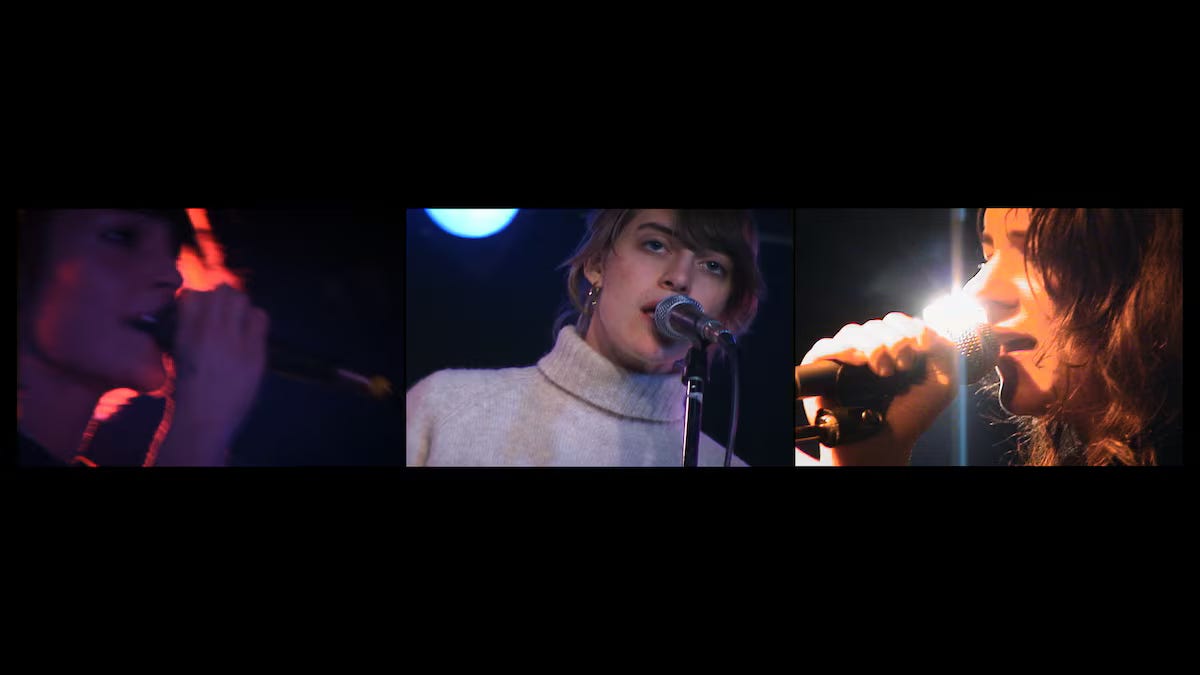Why a Broken Social Scene film took 20 years to make
'It's All Gonna Break' celebrates Canadian indie rock collective
Stephen Chung’s documentary about the Canadian indie rock collective Broken Social Scene, “It’s All Gonna Break,” is being released nearly two decades after he completed his first cut.
In other words, at exactly the right time.
Chung, a Toronto filmmaker, was friends with members of the band, and shot literally hundreds of hours of footage of the band in the early to mid 2000s. He chronicled their rise from buzzed-about bar band to Lollapalooza headliner, and the creation of albums like “You Forgot It In People” and the spinoffs of members like Feist and Metric into their own successful careers.
But when Chung presented a cut of the film to the band in 2007, they rejected it. Chung shelved the footage and went on to work on many other projects, but the Broken Social Scene project still nagged at him – he likened it to the board game in “Jumanji,” calling to him from the basement.
Finally, during COVID, he decided to reconnect with Kevn Drew, Brendan Canning and the other band members, show them some of his original footage, pour some drinks, and talk about the old days. With that additional layer of time and memory, “It’s All Gonna Break” is a poignant, kaleidoscopic film that glides back and forth across the years.
“It’s All Gonna Break” is now playing in Los Angeles and New York City, and will engage in a nationwide rollout of special showings in theaters and concert venues over the next couple of months. A full list of theaters is here.
In a Zoom interview, Chung talked about how he found his way to the band in the ‘00s, how he hoped to capture the sprawling nature of the collective on screen, and what it was like to finish the film 20 years later:
Who were you before you met Broken Social Scene? Why did you have a camera in your hand while everybody else in the room had a guitar or a drumstick?
I grew up in the suburbs of Toronto, and my parents had a smoke and gift store. My parents came from Jamaica at a really difficult political time. They didn’t hire babysitters. They didn’t send us off to play soccer. We just came to the shop and worked there, so they could keep an eye on us.
I hated being there. But I had the radio. And my brother and I listened to the radio the entire time we were there. And it was a time when we could listen to what I guess we would call new wave, and post punk, and all this good stuff that was happening back then.
The other thing that I felI fell in love with is magazines. I would just look at magazines, you know, look at pictures and photography all day long. People had to get my attention because my head was in magazines and the radio. I wouldn’t be paying attention to the store or who’s stealing what. I just knew I wanted to be a photographer.
Why did you decide to start filming the members of Broken Social Scene?
I learned how to shoot pictures as they were starting to make music. There was no end product in mind at all. It was just an instinctual thing, an organic thing, that I had to do. It just felt like the right thing to do at the time.These guys are going to put all this energy into making music. If I’m here, I might as well capture it, because that’s what I do.
How did it feel to photograph your friends? I worked with a lot of photojournalists, and they, you know, you have to be present, but also invisible. Did that feel strange at all, or was it more like this was your role within the collective?
There were a lot of times where they got annoyed that the camera was there. And then especially newer people who didn’t know me did get a bit self-conscious and nervous. But when you’re there every day, people just kind of get used to you. You’re able to fall off into the darkness, be hidden and still be a part of it in some small way.
When they told you in 2007 that they didn’t want to release the film, did you think it was a reaction to the film you made? Or was it more that they didn’t want any documentary about the band released then?
All those things went through my head. Like ‘They didn’t like the film, they didn’t think it was good enough, I’m not good enough.” All the things that prey on your insecurities.
But in the end, it was just not the right time for the band. There had not been enough time to bring any separation. The band was still on an upward trajectory, and I think that it would be premature for it to come out then. So as difficult as it was to do, and as much hard work and money that we put into it, it was ultimately the best thing that could have happened.
Did it always loom in the back of your mind that you might someday finish it?
The film went away, but I never gave up on it completely. I had hundreds of hours of mini-DV tapes sitting in a box. I’d been working as a filmmaker and telling all these stories with these other great directors and storytellers.
Then COVID hit and I stopped working for the first time and had a chance to meditate. And those tapes and those hard drives, like you could hear them from the basement, knocking on the ceiling like “Jumanji.” Saying ‘You started this thing, you might as well finish it.”
How did your experience and growth as a filmmaker in the intervening 20 years affect the final product?
I'm just the accumulation of all the art that I've seen and made, and I just took all the things that I loved and made it my own. All those fractured pictures, and pictures-in-pictures, that’s something that I’ve always loved. It was pretty intentional to turn the camera sideways to have a vertical frame, because that wasn’t being done when we shot those concerts.
And I knew in the back of my head that I was going to take all the pictures that I have that are usable and put them on the screen at the same time. There are so many people in the band, and I want to see what they’re all doing at once. The visual busyness, the visual density, is something that I want people to enjoy. Hopefully they can watch it again and get something new from it.
What was it like to show the band members footage you had shot of them two decades earlier?
People have memories of how it went down, but their memories are not as clear as when they see what actually happened. Showing them material of their younger selves, it’s something that brings them back to a place in time, and puts them in a space where they can talk about it in a better way.
Your journey alongside the band is a part of this story. How did you decide how much of yourself you wanted to put into the film?
I knew that I had to be a part of the story. And in fact, I was a bigger part of the story earlier on, but this band story is so, so massive that I had to shrink the amount. And I'm not like a person who wants to be on camera. I’m way more comfortable behind the camera. That was a challenge I had to overcome within myself was put myself out there like that.
What would you like people to take away from the film?
It wasn’t really something that we made. We just had all this footage, and we had to take stuff away. It was a subtractive process. We don’t need that, we don’t need that. It just got reduced down to the heart of it. What remained was the goodness of what happened back then.





